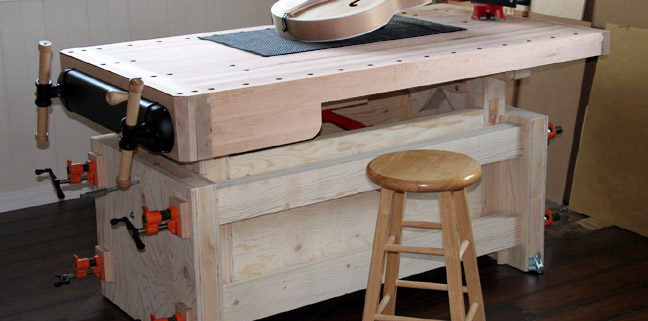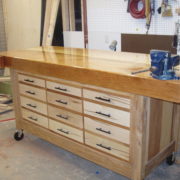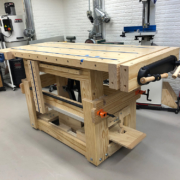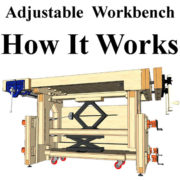Why I Designed this Workbench:
I had a few problems with my first workbench. It was too low for carving or for detail work, it was too high for assembly, it was also too high to sit behind my table saw, and it was difficult to move around. It was anything but ergonomic!
After some thought, I concluded that an Adjustable Height Workbench could solve all of these problems. I then searched the internet to find one. The only option I found was unacceptable to me because it was slow and difficult to actually adjust the height. I decided to design and build one myself, and so my journey began.
The first thing I did was to set some criteria, things that this new bench must have to make it worth the effort. Here is what I came up with:
- First and foremost, it must be a REAL workbench. I wanted an end vise, dog holes, and a nice quick release face vise.
- It would have to have at least 12″ of height adjustability to make it worthwhile.
- It had to be as solid as possible. I would no longer tolerate a bench that moved around while I was working
- It had to be EASY TO USE! I know myself enough to know that if it took more than a few seconds to adjust the height that I would just continue to work in an awkward position until my back gave out. Others might say it’s because I am too lazy, I prefer to think of it as efficient, as in “I can’t waste the time…”.
- It had to be mobile. My shop is small and I have to be able to move things around. And, moving it had to be easy! (see above about laziness, er, efficiency)
The Workbench Design
I had no idea what the bench would look like, but I was determined to meet all of my criteria. I gave this a LOT of thought, in fact, I couldn’t stop thinking about it. My mind went from one idea to another and it kept me up at night, literally. I researched workbenches, I read books and asked other woodworkers what they thought the perfect workbench would look like.
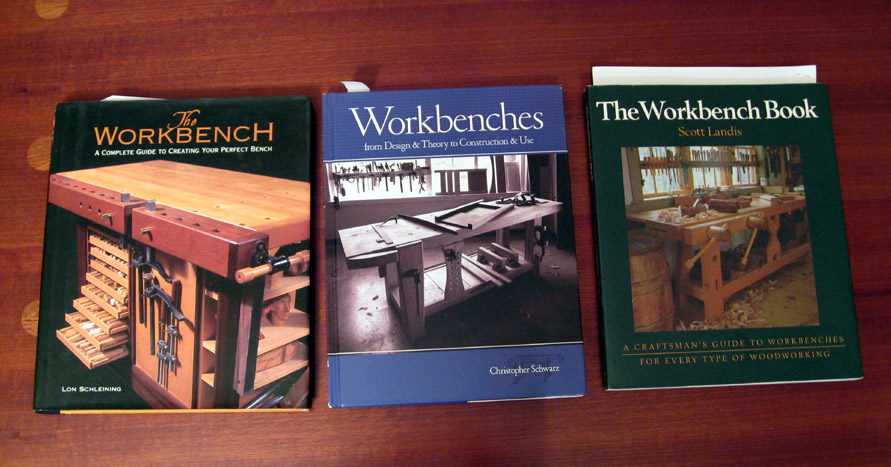
I read books by Scott Landis, Lon Schelling, and Christopher Schwarz. Chris Schwarz’s book is quite good, but it had too narrow of a focus for what I wanted. The Lon Schelling and Scott Landis books are quite similar, but my favorite of the three was The Workbench Book by Scott Landis. The reason I liked this one the best is because he was not stuck on any one particular design. He did not try to say that any one work bench design was best for everyone. What he did instead was to show all sorts of different workbenches and explain their benefits.
After all the research and all the time working on it I finally got a design in my head, but I had to make a cardboard model to see how it would actually go together.
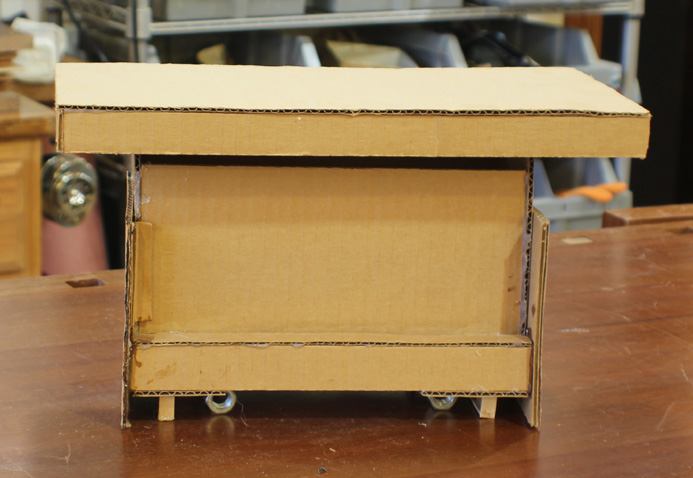
Cardboard Workbench Model
I worked with the model and developed the design until it perfectly met all of my criteria; solid, functional, mobile, ergonomic, easy to operate, and plenty of adjust-ability! What I came up with is a bench with rectangular legs that slid past each other. Some people would describe the legs as “telescoping”. These two sets of legs are held in place with some ordinary pipe clamps. I simply loosen the clamps and adjust the jack to change the bench height. When the bench top is where I want it, I snug up the clamps and the bench is as solid as a rock!
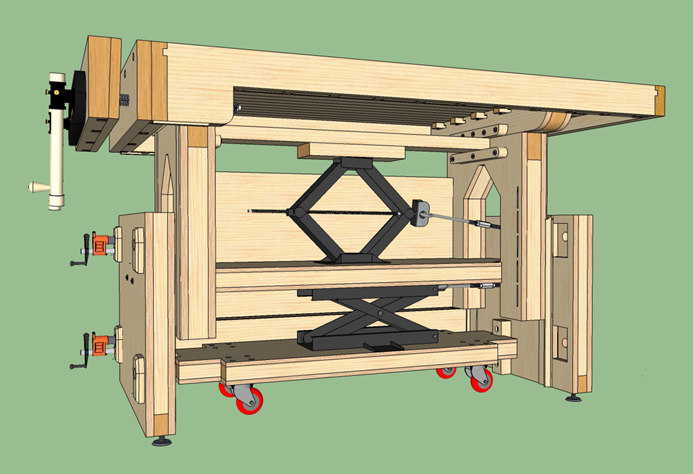
Bench Drawing with Parts Removed for Clarity
You will notice in the drawing above that there are two scissors jacks. The primary jack adjusts the height of the bench top and the other one lifts the entire bench up on to a cart that is nested below the bench.
Actually, if you look closely you will notice that the design in the drawings is slightly different than the design of the bench in the photo. The difference is that the first design, the one in the photo above, has one stretcher and the upper set of pipe clamps go through the inside of the base. On the second, improved design, there are four stretchers and the pipe clamps are concealed inside of them. The revised design is much easier to build than the original one.
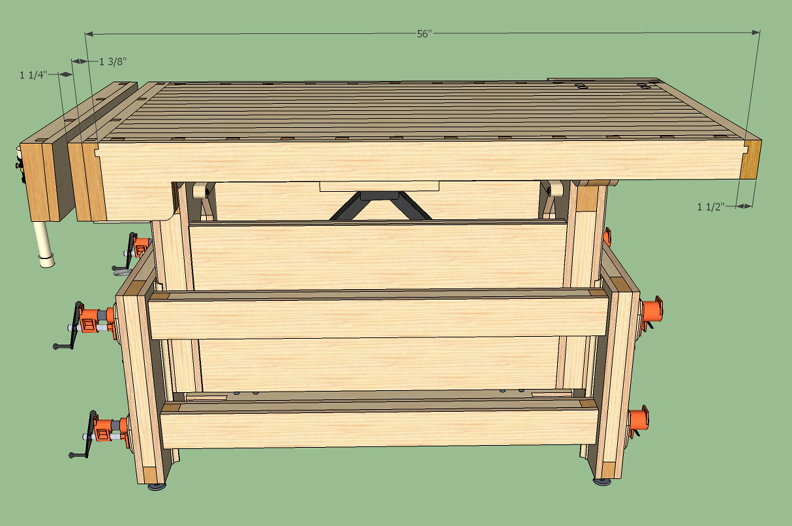
Sketchup Drawing of Jack Bench
The bench top includes everything I wanted, a quick release face vise, bench dogs, and a twin screw vise that doubles as an end vise for the bench dogs.
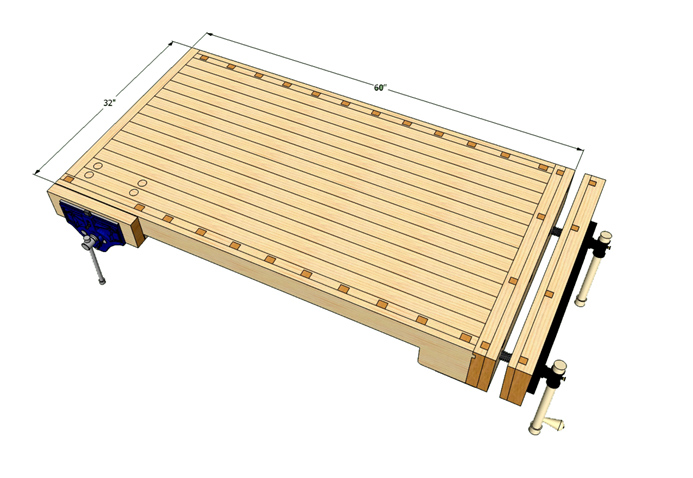
Bench Top Overview
I am thrilled with how the design turned out! I am proud to say that over a thousand people have purchased plans for the Jack Bench since I first designed it. Following are a few photos of benches that others have built from my plans.
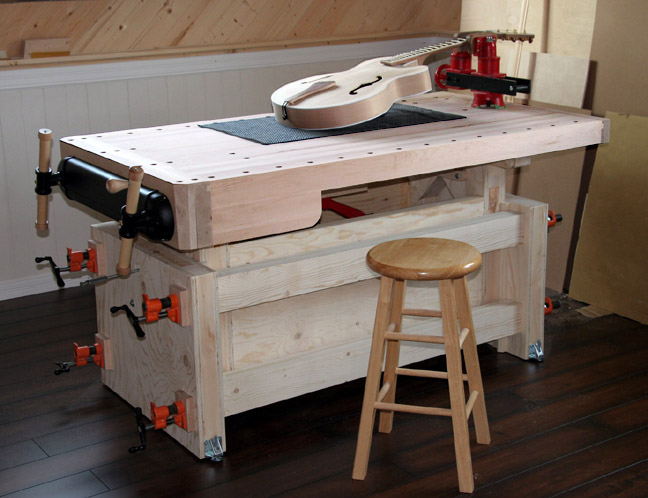
Jack Bench that Serge Lachapelle built from a set of my workbench plans

David Root’s Adjustable Height Workbench
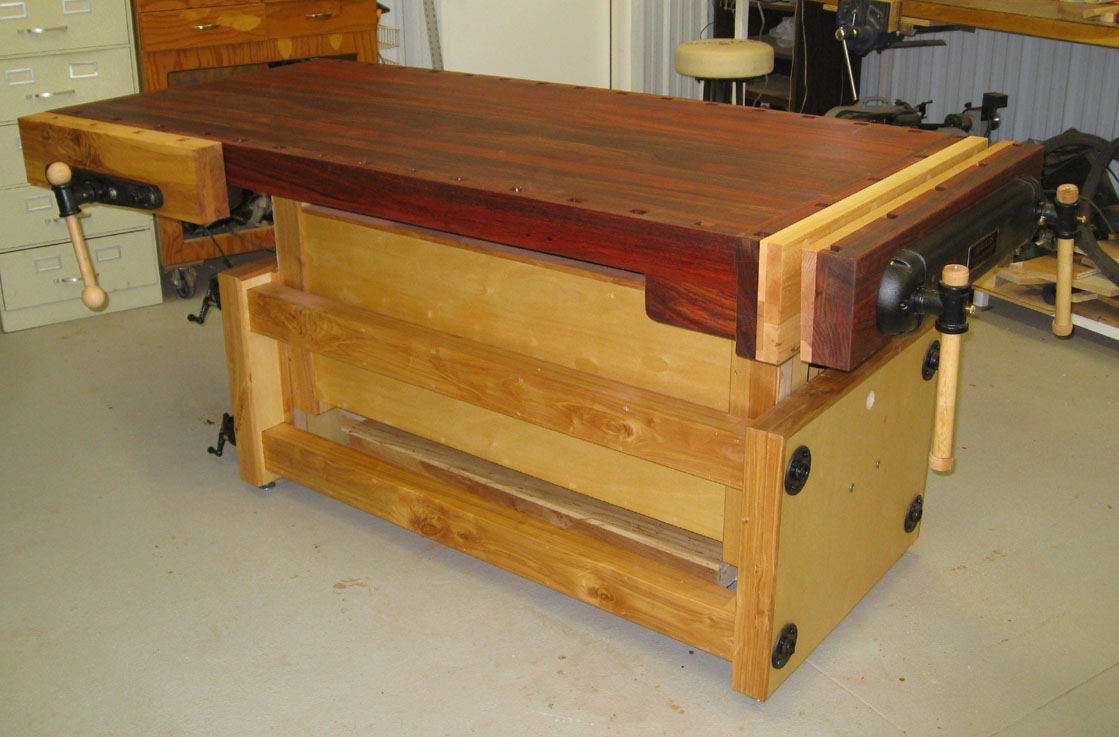
Kevin’s Adjustable Height Workbench
You can see many more examples of benches that others have built from my plans at my photo gallery.

